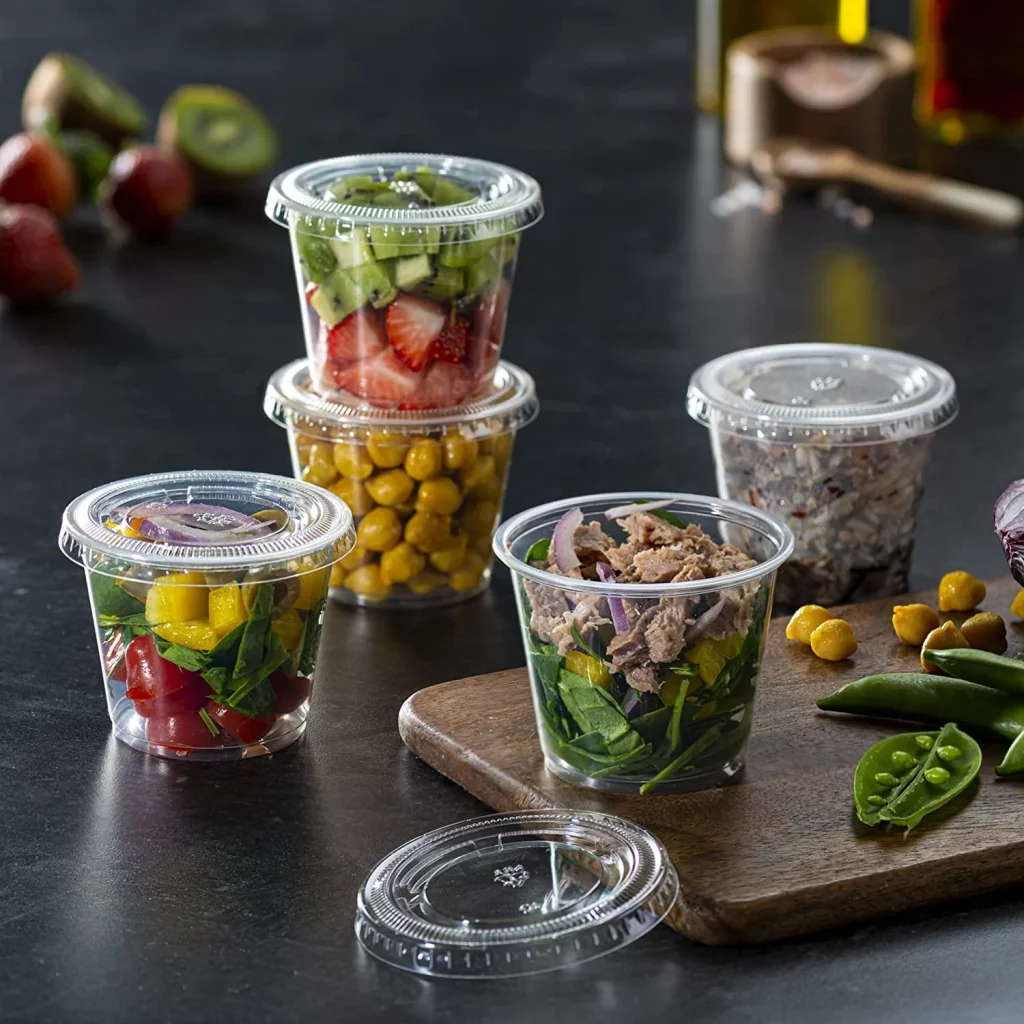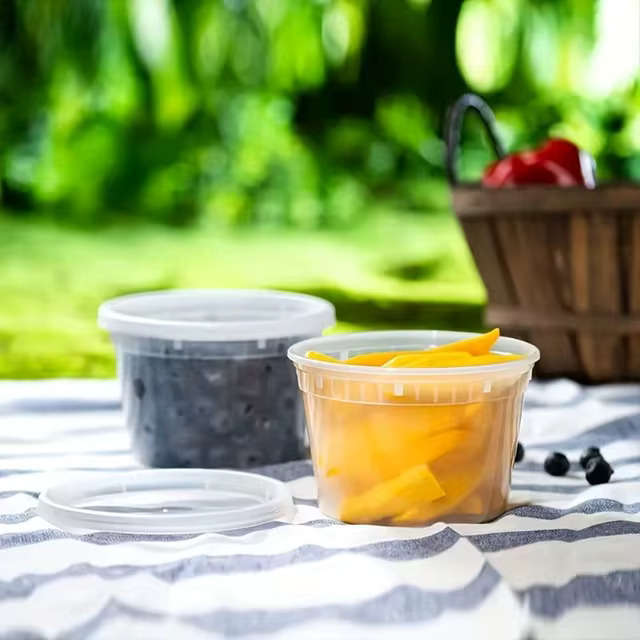Running a successful restaurant isn’t just about the food you serve – it’s about how well you organise your kitchen. One often overlooked essential of any thriving restaurant is the humble food container. These everyday essentials keep ingredients fresh, ensure smooth operations, save money, and maintain health standards. From storage solutions to presentation needs, understanding what works best for your menu and staff can set your kitchen up for long-term success.
Material

The most popular kitchen staple for restaurants is the durable plastic tub, and for good reason. Its lightweight design makes it easy to handle, even in the hustle of a busy kitchen, while its durability means it can withstand daily wear and tear without cracking or breaking. What’s great about this type of containers is the versatility. These tubs come in a variety of shapes and sizes, allowing you to store everything from sauces and spices to prepared meals and bulk ingredients with ease.
Another major advantage of plastic tubs is their adaptability to different storage environments. Whether you need to freeze leftovers, chill ingredients, or keep pantry items fresh, these plastic containers can handle the job. They’re designed to endure a wide range of temperatures, which means you can transfer food straight from the fridge or freezer to the countertop without worrying about damage.
Beyond practicality, the humble plastic tub helps to create a more organised kitchen. When everything has its place and is easy to access, your staff can focus on what matters most: preparing great food. From improving efficiency to preserving freshness, these containers are a convenient, reliable choice that every restaurant can count on.
Different plastics offer distinct advantages, making them better suited for certain tasks in a busy kitchen. Here’s a break down of the top options:
- Polypropylene: Is polypropylene plastic good quality? This material is translucent, so you can easily see what’s inside. It’s both shatterproof and BPA-free. This makes it a reliable and budget-friendly option for general food storage. Whether you’re stacking it in the fridge or pantry, polypropylene gets the job done without breaking the bank;
- Polyethylene: This material stands out for its durability. These white plastic tubs online are made to handle heavy use, making them a great choice for high-traffic kitchens. They’re stain-resistant and can tackle a wide range of temperatures, so you can store just about anything without worrying about long-term wear;
- Polycarbonate: For those needing something tough and crystal-clear, polycarbonate is your go-to material. Known for its strength and sturdiness, it’s ideal for high-volume commercial kitchens where containers take a beating. Plus, its clarity allows for quick and easy inventory checks, saving precious time during busy shifts.
Shape
When selecting plastic tubs in Australia, the shape plays a key role in their functionality and efficiency. In the food service world, the most common shapes are round, square, and rectangular, and each of them offers distinct benefits tailored to specific tasks:
- Round containers are excellent for promoting proper air circulation, which is essential when you need to cool or freeze large quantities of food safely and quickly. They’re particularly handy for soups and sauces since their shape makes it easy to stir or blend directly within the container. This eliminates the need for additional transfers, saving time and reducing cleanup in a busy kitchen. Their rounded edges also make them an ideal choice for liquids or mixtures that need consistent movement or blending;
- Square plastic tubs, on the other hand, shine when it comes to saving space. Their compact shape allows for more efficient storage, particularly in tight areas. However, to ensure optimal cooling or freezing, it’s important to leave space between these containers for proper air circulation. Once the food has cooled, you can tightly stack the containers to maximise storage capacity;
- Rectangular containers are particularly popular for stacking and organising, often seen in food storage boxes, dough bins, or ingredient boxes. Their shallow depth combined with a larger surface area makes them ideal for spreading out large quantities of food for quick cooling. This shape is particularly useful for high-volume kitchens where efficiency is key.
Size

Choosing the right size of food plastic tubs is all about balancing practicality and your kitchen’s unique needs. Commercial-grade options can range from compact 0.5-litre tubs to massive 38-litre containers, offering flexibility for everything from small portions of prepped ingredients to large batches of prepared food. The size you choose should depend on the volume of your ingredients and the full yields of your recipes but don’t forget about usability.
For round and square containers, larger capacities typically mean taller dimensions, but lids often remain interchangeable across sizes, which is a great space-saver. Rectangular containers, often referred to as food boxes, are measured by standardised dimensions, like 66 cm by 46 cm, but vary in depth to accommodate different capacities. These standardised sizes ensure they fit seamlessly into racks and carts commonly used in professional kitchens, making them a reliable choice for high-volume operations.
Lids or Covers
Not all lids are created equal, and their differences can make a big impact in a busy kitchen. Materials and styles vary, with each offering unique features that might better suit specific needs. However, it’s important to note that certain lids are only compatible with specific containers, so finding the right match is key.
Seal lids, as their name suggests, fit tightly to help prevent spills. Some come with double seals, offering enhanced spill resistance, and in some cases you’ll even find leak-proof options for added security. Snap-on lids are a little less rigid in their fit but are ideal for kitchens that value quick and easy access while still providing decent protection from contamination and maintaining freshness. Then some covers simply rest on top, offering minimal effort in application while still keeping ingredients shielded from exposure. These are a convenient choice when speed and ease of handling are priorities.
For storage boxes, you’ll also come across specialty lids like hinged or sliding options, designed for easy access without fully removing the cover. With so many choices, the right lid can streamline your kitchen operations while keeping ingredients fresh and protected.
























